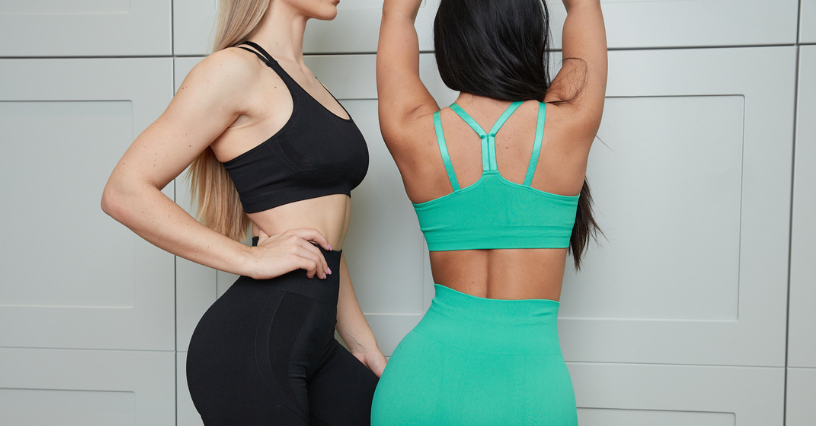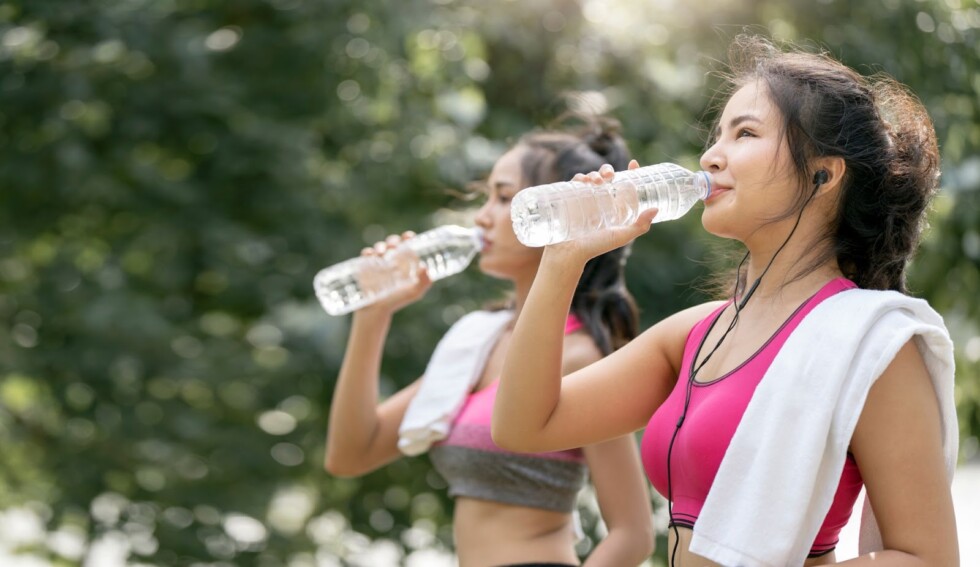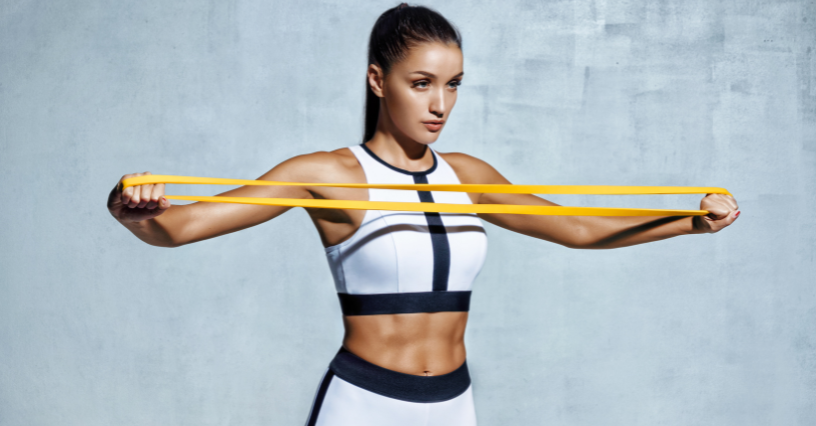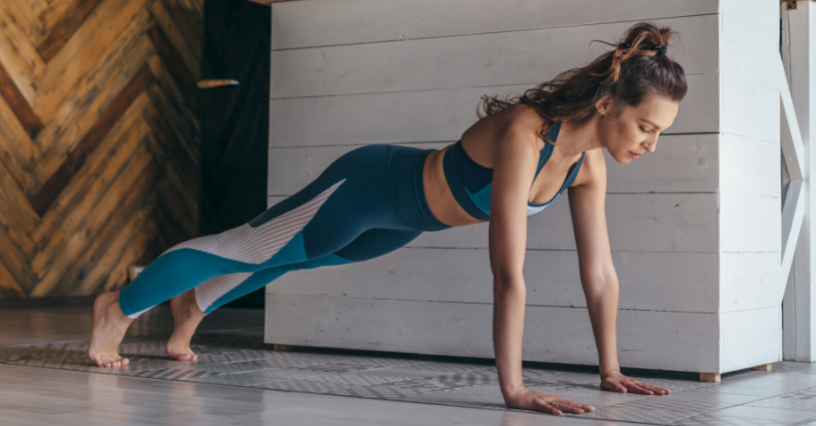A sports bra that doesn’t fit well is not only uncomfortable, but above all, it interferes with your favorite exercises, causing pain, irritation and sometimes, serious breast damage.
We tell you how to choose a sports bra according to the size and according to the sport, what type of support to choose and how to make sure that the model fits correctly.
Women’s breasts are subject to multidirectional movements during exercise, which can result in a change in position from 4 (e.g. walking) to 15 cm (e.g. running) up and down, depending on type and intensity of physical activity and breast size.
In addition, it is worth remembering that breasts also move laterally. Above all, each movement stresses Cooper’s ligaments, the thin bands of connective tissue that help support the breasts.
If you don’t give your breasts the right support in the form of the right sports bra, you’ll not only feel uncomfortable, but you’ll also be putting yourself at risk of pain or even permanent damage. The effect of using an ill-fitting bra can also be sagging or drooping of the breasts.
The experience, usually unpleasant, can lead to postponing physical activity “for later”. Furthermore, women point to breasts as one of the biggest obstacles to participating in sports, right after lack of motivation, lack of time and poor health.
The main purpose of sports bras is to minimize the movement of the breasts and keep the breasts in the correct position so that you feel comfortable, regardless of the size of your bust and whether you are jumping, cycling, dancing, playing volleyball or running.
It also helps keep your chest muscles strong and influences your posture. That’s why it’s so important to correctly fit a sports bra to your individual parameters and needs, so that you can get the most out of every moment of your training and enjoy your well-being and health.

How to choose a sports bra?
According to research, up to 80-90% of women wear the wrong bra size. To be sure you choose the right size, you will need to accurately measure two circumferences – under the bust and at the widest part of the chest.
For this you will need a tape measure and a piece of paper/notebook on your phone. Important: it is best to measure yourself without a bra or clothing, placing the tape measure as close to the skin as possible .
How to measure the circumference under the bust?
Wrap the measuring tape around your back, just below your breasts. Make sure the measuring tape is laid evenly, flat against your body, but loose enough to fit two fingers under it and not touch your breasts at any point.
For large breasts, it may be necessary to lift your breasts. You should be able to breathe freely during the measurement – exhale before reading the result. Record the measurement by rounding down (eg 78 cm = 75 cm; 92 cm = 90 cm; 109 cm = 105 cm) .
How is cup size measured?
Wrap the tape measure around the back and fullest part of the breast – usually right in the center of the nipple. Make sure the measuring tape is level, fits snugly against your skin while still allowing you to breathe deeply. Write down your result. Subtract the result of the chest circumference from the circumference under the bust. The difference is your cup size :
- cup A: 10-12 cm
- cup B: 12-14 cm
- cup C: 14-16 cm
- cup D: 16-18 cm
- cup E: 18-20 cm
- cup F: 20-22 cm
- cup G: 22-24 cm
- cup H: 24-26 cm
Support levels in sports bras for large, medium and small breasts
Sports bras offer three levels of support: low, medium and high. This property is related to the three elements of a sports bra: the straps, the cups and the underbust band (including the sides). The final type of support depends on the cup size you wear and the type of exercise you will be doing .

Low support sports bra
It is distinguished by its comfortable and uniform construction, being made of soft, breathable materials with high elasticity for easy compression, freedom of movement, good fit and comfortable wear.
Some low-support sports bras come with removable inserts so you can change the level of adjustment at any time. It is suitable for low-intensity exercise, eg pilates, yoga, stationary cycling, weightlifting, as well as daily activities (eg walking). The low support sports bra is suitable for women with small breasts or those looking for a comfortable option for everyday wear.
Sports bra with medium support
The intermediate model between low and high support bras is suitable for moderate exercise such as dancing, running, cycling, skiing, weight training, crossfit or mountain hiking.
A medium support sports bra helps hold the breasts together, provides moderate breast coverage and provides sufficient compression throughout the training session. They usually have a wider band under the bust and removable or built-in cups.
Sports bra with high support
Its design (known as scoopback), reminiscent of classic bras, allows each breast to be surrounded and supported. It usually has wide, comfortable straps, back closure with three or more hooks, and different ranges as well as reinforcements.
Some models use a combination of different breast coverage and compression to maximize support. A high support sports bra supports the breasts as much as possible to limit the amount of movement in each direction, thus reducing the risk of breast pain and possible discomfort caused by excessive movement.
It is the best solution for high-intensity exercise including: running, jumping, aerobics, mountain biking and for women with large breasts and active nursing mothers .

Sports bra with cups or a consistent top?
Sports bras can be divided into 3 types, depending on their construction:
- compression sports bras (Compression Sports Bras) – press the breasts on the chest, so that they are as close to the body as possible. They don’t have built-in cups for each breast. Ideal for small breasts (A and B cups) ;
- sports bras with cups (Encapsulation Sports Bras) – have cups that surround and shape each breast individually to maintain their natural shape. These types of bras do not produce compression and are best suited for medium or high intensity sports and for ladies with larger breasts ;
- hybrid sports bras (Encapsulation-Compression Sports Bras) – is an intermediate solution between the two models above, so you don’t have to choose between maximum compression and maintaining a beautiful breast contour. Most often, this type of underwear has an inner layer that provides high support and an outer layer or strip of material that compresses the breasts against the chest wall. This sports bra model offers adequate support for extreme sports .

How to check if a sports bra fits well?
The correct fit of a sports bra affects its effectiveness. Here are some tips to help you figure out if a particular model is right for you:
- underbust strap – should fit snugly across your chest and stay in place no matter how dynamic your training movements are. If the strap is riding up, it’s usually too big. You can still try to adjust the straps or the back closure. Note: a wider strap provides more support, while hook or zip closures provide flexibility and comfort ;
- the cups – these must hide the bust well (breasts must fill the cups) and be centered. It should not swell (which indicates a size too small) or wrinkle (which indicates a size too large) ;
- straps – these should be adjustable so you can adjust them for your comfort. Choose wide straps – they disperse the weight better on the shoulders and do not cause the fabric to cut into your skin. There is the traditional type of bra, which is a tank top (usually a pullover bra that is worn over the head), racerback straps (forms a “Y” shape on the back) and crossback straps (cross over the back) .
- the springs – they must not move away from the ribs and stretch (in which case the size of the belt is too small) or dig into the skin ;
- fit – the bra should fit perfectly without being too tight, restricting movement or restricting breathing. You should be able to fit two fingers between the shoulder straps and shoulders. Raise your arms above your head, do a few jumps and wave your arms. If you feel discomfort or pain, try another model .
The best sports bras for running, yoga, training, cycling
The correct fit of a sports bra is the most important aspect to consider when buying one. However, in addition to functionality, style is also important to us women – we need to like it and make us feel confident and look good during physical activity .

In the attractivesport.coom assortment , every active woman, regardless of the size and shape of her bust or the sport she practices, will find the optimal sports underwear for her. We offer sports bras in classic colors (for example, black and white sports bras from Nike, FILA, Puma or STRONG ID ), but also in more intense and attractive colors and designs.
For fans of different types of fitness and strength exercises, we suggest the Gym Glamor Push Up fitness bras , which will provide solid support but beautifully expose the bust, Carpatree with a seamless design to avoid irritation and abrasion, or Under Armor with HeatGear® technology, which is a technical, extremely light material that guarantees a feeling of coolness and dryness at high temperatures or during intense physical exercise.
For winter sports and physical activity in the colder months, merino wool sports bras, which guarantee high thermal comfort, breathability and antibacterial properties (for example from the icebreaker brand) or DYNAFIT thermoactive sports bras with Dryarn® fibers are ideal .
do you do yoga Opt for Joy in me yoga sports bras made from elastic, quick-drying fabrics, certified by OEKO-TEX® , which confirms a high level of safety and the absence of harmful chemicals in production.
In addition to support, the task of a sports bra is also to effectively remove excess moisture. The breathable material helps you stay dry during exercise and avoid irritation or abrasions . For fitness activities, cycling or running, you can choose Nike sports bras with Dri-FIT technology, Puma with the dryCELL solution or THERMOPERFORMANCE from the SMMASH brand .
How to take care of a sports bra?
We recommend washing your sports bra after each use to prevent odors and bacteria. To extend the life of your bra, it’s a good idea to hand wash it in cold or lukewarm water using a mild detergent. Avoid washing in the washing machine (possibly on the delicate wash program and in a linen bag) and with strong detergents. Do not use conditioners or bleaches and do not dry the sports bra in the tumble dryer, on a heater or in direct sunlight, as high temperatures have a negative effect on the elasticity of the fabric and can cause the underwear to shrink. Dry the sports bra in a horizontal position in a well-ventilated room.
How to wear a sports bra?
The design of a sports bra provides maximum protection and support for the breasts, so this type of bra should be worn directly on the body. Therefore, wearing a regular bra under a sports model is not necessary, on the contrary, it should be avoided to ensure maximum comfort and to take full advantage of the properties of training underwear
How often to replace a sports bra?
A sports bra usually lasts 30-40 washes. It is worth remembering that with each wash, the material loses its high qualities and its structure stretches, so its efficiency decreases. If you notice abrasions, the bra begins to lose its original shape, it no longer supports your breasts properly, or if you feel that it pinches you, it is a sign that it is time to buy a new model.
Which sports bra is suitable for large breasts?
If you have larger breasts, opt for a sports bra with medium or high support, even if your workouts are low-intensity.
The extra support provides adequate compression and security so you’ll feel comfortable and confident whether you’re doing beginner asanas, jumping on the trampoline, trail running or doing aerobics.
Often, women with large breasts choose sports bras that close in the front (for example, with a zipper) because of the ease with which they can be put on and taken off, and because they fit perfectly and support the breasts well.



